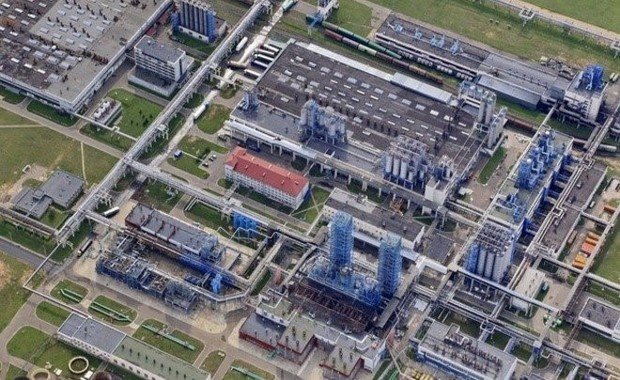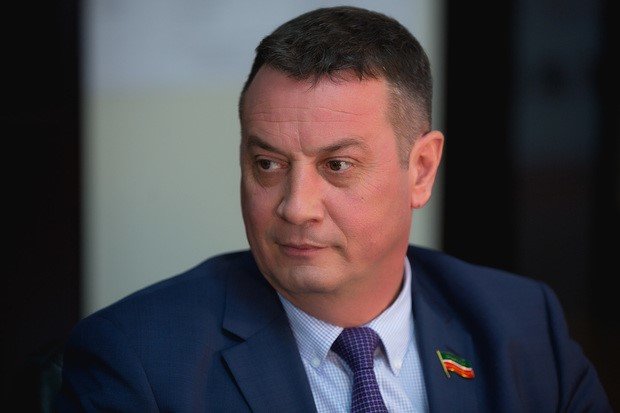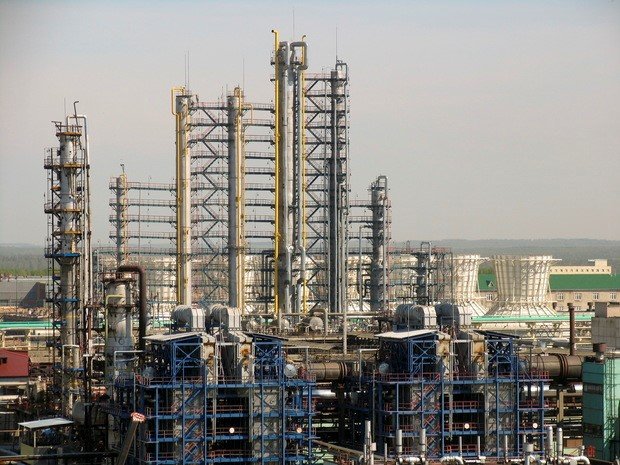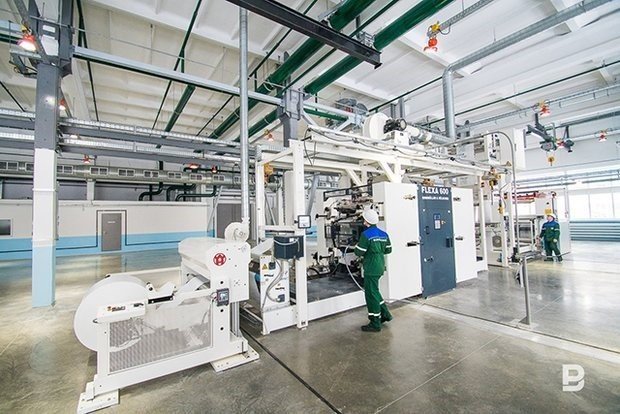Farid Minigulov: ''Main production facilities of Kazanorgsintez have been updated at 70% since 2003''
The company has started a new stage of modernization, designed for 3 years
The new stage of modernization has begun at one of the budget-forming enterprises of Tatarstan, Kazanorgsintez PJSC. The large-scale renovation began in 2003, when the chemical enterprise joined TAIF Group. In three years, from 2018 to 2020, it is planned to allocate 10,5 billion rubles for the construction of new facilities and purchase of equipment. The company plans to develop a new technology to produce cumene, to start four pyrolysis ovens and to increase the production of polycarbonates. Farid Minigulov, Director General of Kazanorgsintez, told the correspondent of Realnoe Vremya more details about the prospects of the development of Kazanorgsintez (KOS).
Prices of polyethylene stabilize in 2018
Mr Minigulov, the revenue of Kazanorgsintez amounted to 72 billion rubles by the results of 2017, which is by 3,4 billion rubles less than in 2016. What is the reason of the decrease in revenue in your opinion? What was the situation on the Russian petrochemical market in 2017 in general?
During 2017, prices for the main product of Kazanorgsintez PJSC — polyethylene — continued to decrease on the Russian petrochemical market. One of the main factors that influenced the decline in prices is the strengthening of the ruble. In addition, new suppliers of polyethylene from Uzbekistan and Ukraine entered the Russian market with an aggressive price policy. On the one hand, the cost of their products allows them to act aggressively. On the other hand, low demand in their domestic markets push them to enter foreign markets. Therefore, these manufacturers are entering the nearest regions. For Uzbekistan and Ukraine, the most convenient from the point of view of logistics is the Russian market. At the same time, the Ukrainian authorities have tried to protect their polyethylene producers in the domestic market from competitors-importers.
How have prices for Kazanorgsintez products changed at the end of 2017 and at the beginning of this year?
The decline in prices for polyethylene began in 2016: within three quarters, they fell by 15%-20%, in the fourth quarter, the prices began to slightly grow. In 2017, prices did not reach the level of 2016 yet, although they grew by 10%. We can say that now the prices of polyethylene have stabilized.
''We have opportunities to increase production by another 5-10%''
At the annual meeting of shareholders of Kazanorgsintez PJSC you noted in your speech that the depth of the decline in revenue was offset by an increase in production volumes. In 2017, Kazanorgsintez produced a record amount of low-pressure polyethylene in the history of the enterprise — 508 million tonnes. How did you achieved such a high result?
The record figure was achieved due to the availability of sufficient raw materials. Polyethylene is made of ethylene, respectively, the higher plant's ability to produce ethylene is, the greater productivity is. Last year there were more raw materials than in previous years. We also purchased ethylene from the outside. In total, this gave us the opportunity to produce the record amount of low-pressure polyethylene.

But it was also said that the plant for the production of high-pressure polyethylene was underutilized due to lack of ethylene.
We have more capacity for the production of polyethylene than for ethylene, and the volume of its supply from the side also does not allow us to fully meet our needs. We can produce more products.
That is, there is the problem with the lack of raw materials, or it is a purposeful decision not to fully load the production?
The question is still in the lack of raw materials: we still do not have it enough. Now the shortage of raw materials is less than before, but in general the situation persists. There is not enough raw materials for the production of ethylene, as well as not enough ethylene itself. We have opportunities to increase the production by another 5-10%. And the task is to work at the maximum allowable loads. Here we are guided by a simple economic law: the more capacities are loaded, the higher economic efficiency is.

How are you going to solve the raw material problem in 2018?
Negotiations are being underway on the supply of raw materials at the level of 2017. Now we can conclude that the load of our production capacities will not be lower than last year. Nevertheless, our partners-suppliers have a positive dynamics of production of raw materials for the positions necessary for us. For our part, we are holding all the necessary consultations to ensure that the volume of supplies can be increased in the second half of this year.
The gas processing plant, the construction of which is planned by TAIF Group's Development Strategy until 2030, is able to eliminate the shortage of raw materials. Can this construction solve the problem with the supply of raw materials?
Yes, for this purpose the negotiations are being held.
China and Europe are interesting
How difficult is it to compete in the polyethylene market?
In the domestic market of the Russian Federation there are several manufacturers of low-pressure polyethylene, high-pressure polyethylene and linear polyethylene. For each position, the Russian market is surplus. Therefore, all its participants have extremely aggressive pricing policy. Here, as I have already said, importers from neighbouring countries — from the same Uzbekistan and Ukraine — are active. In addition, a number of special polyethylene brands are imported from European plants.
Suppliers from the Middle East and Asia are trying to make large-tonnage deliveries. Therefore, in competition in the polyethylene market in Russia, the most important thing is the quality of products, the ability to work with consumers.
How do buyers assess the products of Kazanorgsintez?
Kazanorgsintez is considered to be one of the premium manufacturers in the Russian market. Our main products are manufactured according to licensed foreign technologies. The company constantly upgrades facilities, expands range assortment. During the past year and the first half of this year, we tested several new grades of polyethylene, which have already received a positive assessment of the final processors.
Besides, Kazanorgsintez is actively using the most convenient forms of supply for our partners. For example, we deliver products directly to the consumer's door, which we did not in 2017.
Last year, exports increased by 12%. Will the company increase exports, and what areas are you considering?
Since the Russian market of polyethylene is surplus, any manufacturer is forced to export. Given the competition, it is impossible to sell the entire volume of products in Russia. It is for this reason that Kazanorgsintez always tries to maintain the volume of exports at the level of 20-25%. In some exceptional years, we went beyond this framework. For example, when the crisis significantly reduced the volume of consumption of finished products of our partners-polyethylene processors, we increased supplies abroad. Conversely, when there was a surge in sales associated with large-scale events, such as the Olympics, we realized that demand was increasing, and we reduced exports. Of course, there are a number of strategic partners in export areas, which are regularly supplied with certain volumes, and we have always fulfilled our obligations. But in general, Kazanorgsintez has quite flexible policy on exports. Now we are starting to work very closely with China and continue to develop the European direction.
''The company has been updated at 70% by main production capacities''
The staff of Kazanorgsintez PJSC this year marks a double anniversary — 60 years from the date of formation and 55 years from the date of production of the first product. In 2003, with the coming of TAIF Group, the enterprise began its renovation. Compared to 2003, how much has Kazanorgsintez changed over 15 years?
The changes have affected almost all production facilities and infrastructure. By main production capacities, the company has been updated at 70%. Every year a huge number of projects is implemented, they are aimed at improving and stabilizing production capacities. The modernization is ongoing, and the company invests in this huge amount of money. Last year alone, we allocated 7,8 billion rubles to finance capital construction projects and to upgrade the equipment.

What has been updated over the last five years?
''We continue to modernize the main production — ethylene production, we can say, the heart of the plant. On the basis of it, the main product of the enterprise — polyethylene — is produced. We have been seriously engaged in infrastructure, technical possibility of transportation of hydrocarbon raw materials related to railway supplies. Modernization and improvement of technological indicators at the plant of low-pressure polyethylene were carried out, additional extruders were installed, the cooling system was updated. The enterprise has done a great job to consistently obtain high quality polyethylene. A large programme of modernization of the plant for the production of high-pressure polyethylene has begun, equipment is being update here.
The enterprise has updated the water intake and wastewater systems. We have carried out a serious modernization of the energy supply system.
Out of those capacities, which were left as legacy, what does still operate?
Today, the oldest our production is ultrathene. The works on modernization were also carried out there, but there were no large-scale changes. We are deciding how to fully update it.
''We will launch new pyrolysis ovens in the fourth quarter of 2018''
This year it is planned to put into operation four pyrolysis ovens, which will replace 10 old ones. At what stage is the project implementation being today?
The equipment is being installed, and the main works are already coming to an end. Within two to three months, everything should be ready for commissioning. In the fourth quarter of 2018, we will launch the project.
What is the economics of the project: how much will ethylene production increase, what are the volumes of funding?
By to the results of the work performed in 2018, ethylene production will increase by 17,000 tonnes per year. In general, the project to modernize the production of ethylene is planned to be completed in 2020. Investments will amount to 3.5 billion rubles. It does not include VAT.
Traditionally, last year the most revenue for Kazanorgsintez was brought by polymers and copolymers of ethylene – 71,3%, and polycarbonate – 14,3%. Do you plan to increase the capacity for the production of polycarbonate?
Yes, today we are engaged in this project. The development of our licensor's technologies allows us to increase our capacity by 30% in the shortest period of time, up to one and a half years. If this is implemented, the capacity of polycarbonate production will be 90,000-100,000 tonnes, depending on the brand range. Currently, we are considering this project, studying its investment attractiveness, assessing the total amount of funding and the real terms of implementation. If it is decided to launch it, we will announce it.
Kazanorgsintez has adopted a programme for the development of existing production for the period 2018-2020. How much money is required for the implementation of the programme and from what sources will it be financed?
The adopted programme for the period from 2018 to 2020 assumes the volume of investments at the level of 10,5 billion rubles. We finance from our own funds, loans are not actually used.

It is planned to introduce the technology of cumene production using zeolite catalyst at the bisphenol A plant. Could you tell us more about this technology? How will it affect the production and economic indicators of Kazanorgsintez?
The project of cumene production technology implementation with the use of zeolite catalyst is aimed at reducing energy resources consumption and main types of raw materials — propylene and benzene. The essence of the technology is that active and harmful from the point of view of effluents aluminum chloride is replaced by zeolite. This significantly reduces the amount of harmful effluents, reduces side effects that occur when using aluminum chloride when disposing.
The licensor of the technology is Badger. Investments in the project are more than 1 billion rubles. The project is to recoup itself from the beginning of operation for 5 years.
In 2016, in an interview with our publication, you said that Kazanorgsintez planned to create its own production of benzene necessary for the production of phenol and acetone. Has this project survived and if so, at what stage is it?
As an idea, it has been preserved, but the project will not be implemented at Kazanorgsintez, but at the site of the Nizhnekamsk industrial hub.
Kazanorgsintez has recently been interested in biopolymers. At what stage is the project now?
We are continuing negotiations on technologies, licensing.
How promising is bioplastic for Russia?
It is generally promising. First of all, the prospects for its consumption are highest in countries that pay great attention to environmental aspects. Now the United States, Japan and European countries are actively engaged in the issues of bioplastic. Then other countries will be interested in it. 10 years, 20 years will pass, and it will be used everywhere. Nevertheless, the use of basic polymers based on petrochemical raw materials will continue, but their scope will change. Polyethylene will be used for the production of products with a long life cycle, in infrastructure projects, in communication lines, in construction, mechanical engineering.